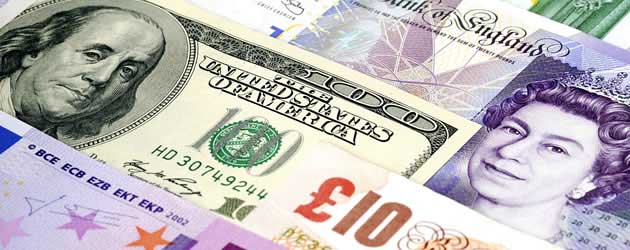
The Pound to US Dollar exchange rate declined by around half a cent from 1.6380 to 1.6330 yesterday afternoon as traders reacted to an encouraging set of US ecostats.
American Gross Domestic Product for the third quarter was revised higher from 2.8% to 3.6% as a large jump in stockpiles sent GDP higher than the majority of economists had predicted.
Additionally, it was reported that the number of people filing for jobless benefits fell by -23,000 last week; the Initial Jobless Claims figure came in at 298,000 compared to forecasts of 320,000. The near-6-year low result means that Federal Reserve officials might be more inclined to reduce the pace of the $85 billion a month asset purchasing scheme later this month.
On Wednesday it was reported that the ADP Employment Change indicator massively outperformed analysts’ expectations, coming in at 215,000 compared to estimates of 170,000. With two important US labour market barometers coming in stronger-than-anticipated this week, it is entirely possible that this afternoon’s Non-farm Payrolls report will also print above the market consensus.
Analysts anticipate a fairly average 183,000 NFP print for November, but any number above 200,000 could seriously boost QE3 taper bets, which in turn is likely to bolster demand for the US Dollar.
GBP/USD is currently resting just above technical support at 1.6325, however, Sterling is likely to fall towards the next support line at 1.6260, or perhaps even lower, if investors interpret this afternoon’s NFP report to signal a reduction of Fed stimulus.
President of the Atlanta branch of the Federal Reserve, Denis Lockhart, told reporters yesterday:” the outlook for the economy justifies the consideration” of tapering. Lockhart also commented that stimulus could be softened “during the next few meetings”. The comments were seen to increase the probability of Fed tightening on December 18th, when Central Bank officials meet to discuss monetary policy.
The Bank of England elected to leave its benchmark interest rate unchanged at the current record-low of 0.50% yesterday and voted to maintain its current asset purchasing target of £375 billion. The outcome was largely predicted by markets and as such did not have a material impact on Sterling trading.
Chancellor of the Exchequer George Osborne revised his GDP forecast for the UK economy from 0.6% to 1.4% in 2013 and from 1.8% to 2.4% in 2014. However, the Autumn Statement did not lead to a stronger Sterling exchange rate as the Chancellor commented that he will not be relaxing austerity measures, despite the uptick in UK growth.
The Euro strengthened against the Pound by around a cent, with GBP/EUR falling to 1.1950 as the European Central Bank kept rates on hold at 0.25% and distanced itself from further monetary loosening.

Comments are closed.